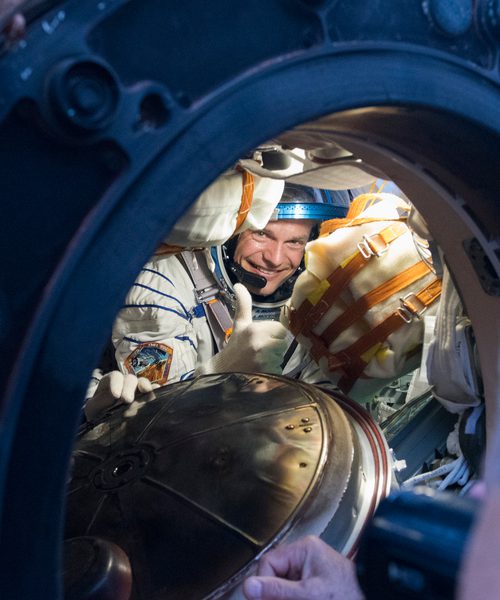
Meteor showers
Shooting stars are fiery rocks that leave a luminous trail across the sky on their way down through our atmosphere. But when are the best times to see shooting stars and what is the difference between a meteor and a meteorite?
Shooting stars or meteors are rocks or dust grains that enter the Earth's atmosphere at high speed. They can appear in many different ways depending on the size and speed of the object.
The air in front of the object is compressed and becomes very hot. The collision of air molecules and the high heat generation causes the object to vaporise. The heat also causes the air around the object to glow. It is the trail of glowing air that we see as a shooting star.
The faint shooting stars - which are the most numerous - are usually seen as a small bright line that quickly disappears. The duration is a fraction of a second and the colour is white.
Large shooting stars - so-called fireballs - are more often seen as a clear object with a tail. Powerful shooting stars can also break up into several pieces - almost like a New Year's rocket. The duration can be several seconds. The colour can be white, blue-white, greenish, yellow or orange.
If you have seen a fireball, you can register your sighting here.
Word confusion
Meteor, meteoroid, meteorite? It can be hard to keep track of what these different things are called. It's essentially the same object, it's just in different places.
Meteorites is the word you use when the object is still out in space. They can be larger and smaller rocks or dust grains that come from either asteroids or comets.
Meteors is the word used to describe the same object travelling through the Earth's atmosphere. They are also called shooting stars. Larger meteors are called fireballs.
Meteorites is the word used when the object - if it hasn't burned up on its way down through the atmosphere - has landed on Earth.
Meteor showers
During the year, there are special periods when you can see a lot of shooting stars. These are called meteor showers and occur when the Earth passes through the orbit of a comet or asteroid on its journey around the Sun. Debris and smaller parts of the asteroid also orbit in the orbit, and these are what we encounter when we cross the orbit. It takes the Earth one year to orbit the Sun, which is why we pass through asteroid orbits exactly one year apart.
During a meteor shower, the shooting stars appear to come from a specific place in the sky. They are said to radiate or emanate from a specific point. For the same reason, many of the large meteor showers are named after the constellations they appear to radiate from. For example, the Leonids and Perseids are named after Leo and Perseus respectively.
Types of meteor showers
The Quadrantids
In early January, you can experience the Quadrantids. You can see up to 120 shooting stars per hour at the maximum, which is very short - only around 6 hours, so bad weather is often a limiting factor.
The Quadrantids radiate from a point close to the Big Dipper.
The Lyrids
Taking place in April, the Lyrids are a medium-sized meteor shower that usually produces many shooting stars for three nights around maximum.
These meteors may have faint trails, but fireballs are possible. The moon is about half at the time of maximum. The Lyrids radiate from the constellation Lyra.
Capricornids
The Capricornids are not usually a meteor shower we keep a close eye on in Denmark, but they are actually active from mid-July to mid-August.
It is rare for the meteor shower to produce many shooting stars, but there is a pretty good chance that the shooting stars it produces are fireballs. Capricornids radiate from the constellation Capricorn.
The Delta Aquariids
The Delta Aquarids are a medium-sized meteor shower that can produce up to 20 shooting stars per hour. The meteoroids are remnants of the comets Marsden and Kract. At maximum, you can expect up to 16 shooting stars per hour. This number is an idealised value and only applies under optimal conditions.
The Delta Aquarids are also best seen from the southern hemisphere. The Delta Aquariids are named after the constellation Aquarius, where they radiate from, but shooting stars can be seen all over the sky.
The best viewing opportunities are in a dark place after midnight.
The Perseids
The Perseids are one of the largest meteor swarms of the year. This year you can see up to 100 shooting stars per hour at peak in mid-August. These are the remains of comet Swift-Tuttle that we see as luminous trails in the sky. The Perseids are known for having a lot of large meteors or fireballs. The meteors will radiate from the constellation Perseus but will be visible throughout the sky.
The Draconids
The Draconids are a relatively small swarm where you can see up to 10 shooting stars per hour at maximum. The shooting stars will appear as if they originate from the constellation The Dragon.
The Orionids
The Orionids are one of the medium-sized meteor swarms of the year and are remnants of Halley's Comet, which takes around 76 years to complete one orbit around the Sun.
The Orionids have sometimes produced many shooting stars, but this varies from year to year. At maximum you can see up to 20 shooting stars per hour.
The Taurids
The Taurids are one of the smaller annual meteor swarms, with only around 5 shooting stars per hour at maximum in mid-November.
They are remnants of the comet Encke that we see in the sky. The Taurids usually move slowly across the sky and can produce large shooting stars - fireballs. The Taurids radiate from the constellation Taurus, but can be seen throughout the sky.
The Leonids
The Leonids radiate from the constellation Leo and the meteor shower occurs when the Earth passes the comet Temple-Tuttle's orbit.
You can usually see around 15 shooting stars per hour during the Leonids' peak in mid-November. Keep a close eye on the sky after midnight and in the early morning hours when the shooting stars are most visible.
The Geminids
Radiating from the constellation Gemini, the Geminids are considered by many to be the largest meteor shower with up to 120 shooting stars per hour.
The meteor shower is created by debris from the asteroid 3200 Phaethon. The meteor shower peaks in mid-December.
The primordial sides
It is expected that the Primeval Sides will see up to 10 shooting stars per hour at maximum.
The Ursids are named after the constellation Ursa Minor, which they appear to radiate from. They are remnants of comet 8P/Tuttle.
Observation tips
- Get out of the city and find a dark place where light pollution is minimal.
- Bring warm clothes and maybe a blanket. It takes patience to look for shooting stars. Especially some of the smaller swarms where the meteors can be far apart.
- Check the weather forecast. If it's cloudy, the chances of seeing shooting stars are zero. Also check when the moon rises and sets. You can see more shooting stars when the Moon is not in the sky.
- Look up! If you lie down on your back, you have a larger part of the sky in your field of view and thus a better chance of seeing a shooting star.
- Meteors can usually be seen across the entire sky, although on average they seem to radiate from a specific point.







